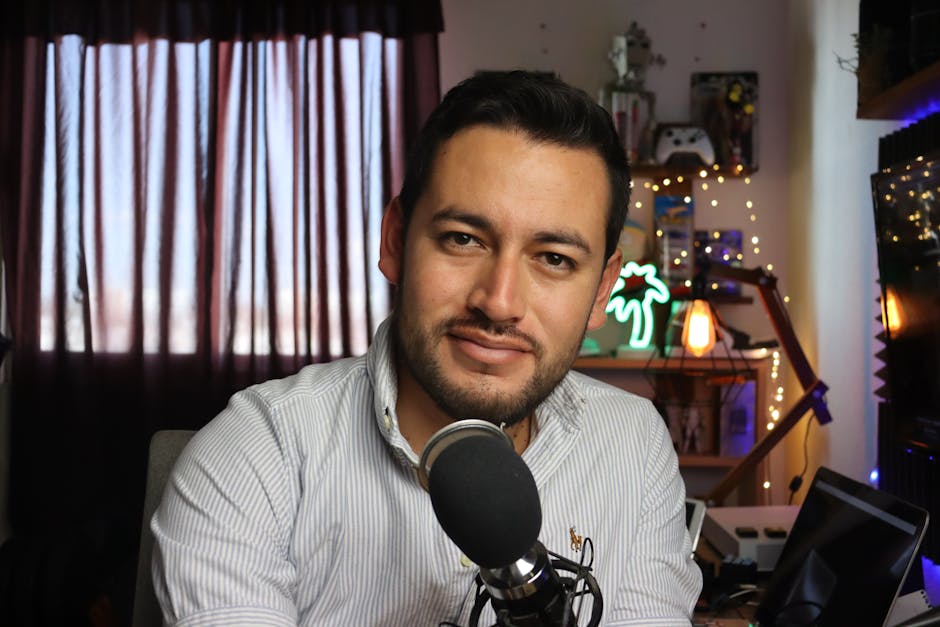How I Use Youtube to Host and Promote My Podcast (video Podcasts).
How I Use YouTube to Host and Promote My Podcast (Video Podcasts)
When I first started my podcast, like many, I thought of it purely as an audio medium. I uploaded episodes to a traditional hosting platform, generated an RSS feed, and distributed it to Apple Podcasts, Spotify, and the like. It was effective, but I quickly realized I was missing a massive opportunity: YouTube. For me, YouTube isn’t just another distribution channel; it’s become the central hub for hosting and, more importantly, proactively promoting my video podcast. It’s where I connect with a new, visually-driven audience, extend my content’s lifecycle, and unlock discoverability that pure audio simply can’t match. This isn’t about just dumping an audio file onto YouTube; it’s about a deliberate strategy to leverage the platform’s unique strengths.
My Approach to Transforming Audio into Engaging YouTube Video Episodes
The first step in my YouTube strategy is to understand that a video podcast isn’t just an audio podcast with a static image. While some creators do this, I find it limits engagement. My goal is to create a compelling visual experience, even if I’m not always on camera. This means I dedicate time to preparing a video asset for every single episode. If it’s an interview, I record both video and audio, even if it’s just a simple webcam setup. The visual cues—facial expressions, gestures, reactions—add a layer of connection that audio alone can’t provide. For solo episodes or narrated content, I get creative. Sometimes it’s B-roll footage relevant to the topic, other times it’s animated text, graphics, or even just a well-designed slideshow with key points appearing on screen. The key is movement and visual interest to keep viewers hooked.
From Raw Footage to Polished YouTube Content
My editing process for YouTube is distinct from my audio-only edits. After I’ve polished the audio, I bring it into my video editor. If I have talking head footage, I cut out awkward pauses, “ums,” and stumbles, ensuring a tight, dynamic pace. For episodes without direct camera footage, I focus on overlaying relevant visuals. This might include stock footage, animated graphics, data visualizations, or even simply a rotating collection of branded imagery with text overlays highlighting key quotes or statistics. I also make sure to add an intro and outro animation that includes my podcast’s branding, social media handles, and a clear call to action (like subscribing). This consistent branding helps build recognition and professionalism on the platform.
Crafting My YouTube Episodes for Maximum Discoverability and Viewer Retention
Once the video is edited, the real YouTube-specific work begins: optimization. This is where I shift from being a podcaster to a YouTube content creator, understanding the platform’s unique algorithms and audience behavior. My aim is not just to upload, but to make my content discoverable and keep viewers watching from start to finish. This involves meticulous attention to titles, descriptions, thumbnails, and other on-page elements that signal relevance to both the algorithm and potential viewers.
For every episode, I spend considerable time on the title. It needs to be catchy, keyword-rich, and accurately reflect the content. I often use a headline formula that combines a strong hook with relevant search terms. For example, instead of “Episode 25: Interview with Dr. Smith,” I might use “Unlocking Brain Power: Dr. Smith Reveals Neuro-Hacks for Peak Performance | Video Podcast.” This immediately tells both YouTube and potential viewers what the episode is about and why they should click. I also ensure my descriptions are robust. They’re not just show notes; they’re an opportunity for more keywords, time-stamped chapters, and calls to action. I always include a full transcript or a detailed summary, links to relevant resources, and links to my audio podcast versions. This comprehensive approach signals to YouTube that my content is valuable and well-organized, increasing its chances of ranking. Crafting engaging podcast show notes is a skill that translates directly to YouTube descriptions.
Leveraging Thumbnails, Tags, and Chapters for Enhanced Performance
The thumbnail is arguably the single most important factor for click-through rate (CTR) on YouTube. I treat it like a mini-billboard. Each thumbnail is custom-designed, featuring clear, bold text, a compelling image (often a still from the video or a graphic representing the topic), and my podcast’s branding. It needs to stand out in a sea of other videos. I use tools like Canva to create professional-looking thumbnails quickly. Beyond the visual, I dive deep into tags. While less critical than they once were, relevant tags still help YouTube understand the context of my video. I use a mix of broad and specific keywords, including my podcast name, guest names, and topic-specific terms. Tools like TubeBuddy or vidIQ are invaluable for researching effective tags and optimizing YouTube video SEO.
Finally, chapters are non-negotiable for my video podcasts. By adding timestamps in my description, I create clickable chapters that allow viewers to navigate the episode easily. This not only improves user experience but also signals to YouTube that my content is well-structured, potentially leading to better search ranking and improved watch time, as viewers can quickly find the most relevant sections. This is especially useful for longer-form interview podcasts where a viewer might only be interested in a specific part of the conversation.
Beyond the Upload: My YouTube Tactics for Actively Promoting Each Video Podcast
Uploading an optimized video podcast is only half the battle; active promotion is where the real growth happens. I don’t just set it and forget it. My strategy involves a multi-faceted approach leveraging various YouTube features and cross-promotion techniques to ensure my content reaches as many eyes and ears as possible.
Engaging My Audience with YouTube Shorts and the Community Tab
YouTube Shorts have become an incredibly powerful promotional tool for me. After each full-length video podcast episode goes live, I create 3-5 short, punchy clips (under 60 seconds) highlighting the most compelling moments, insights, or funny snippets. These Shorts are designed to be standalone pieces of valuable content, but they always include a call to action directing viewers to the full episode. This strategy taps into the short-form content trend and acts as a fantastic funnel, introducing new audiences to my long-form work. It’s a low-effort, high-reward way to repurpose content and expand my reach.
The Community Tab is another underutilized gem. I use it regularly to engage with my audience beyond just comments on videos. I post polls related to upcoming topics, ask questions about previous episodes, share behind-the-scenes photos, and announce new episodes or guests. This creates a sense of community and keeps my audience thinking about my podcast even when a new episode isn’t live. It’s a direct line of communication that fosters loyalty and encourages active participation, making my audience feel more connected to the show.
Cross-Platform Promotion and Strategic Playlists
My promotion extends beyond YouTube itself. I actively share my YouTube video podcast links on all my other social media platforms – Twitter, Instagram, LinkedIn, and even my email newsletter. I embed the YouTube player directly into my blog posts when discussing episode topics. This ensures that wherever my audience hangs out, they have an easy path to discover and consume my video content. I also create strategic playlists on my YouTube channel. Instead of just a generic “all episodes” playlist, I categorize them by topic, guest, or series. This helps viewers binge-watch related content, increasing watch time and encouraging deeper exploration of my channel. For instance, I might have a playlist titled “Interviews with Business Leaders” or “Deep Dives into Marketing Strategies.”
Leveraging YouTube’s Engagement Features to Build My Podcast Community
Building a successful podcast isn’t just about content; it’s about community. YouTube offers fantastic tools to foster this, and I make it a priority to engage with my viewers as much as possible. This isn’t just a nicety; it’s a critical part of my growth strategy. When viewers feel heard and acknowledged, they become loyal subscribers and advocates for the show.
Active Comment Moderation and Responding to My Audience
I personally read and respond to as many comments as I can on my video podcast episodes. This shows genuine appreciation for my audience and encourages further interaction. I try to answer questions, thank people for their insights,




Post Comment